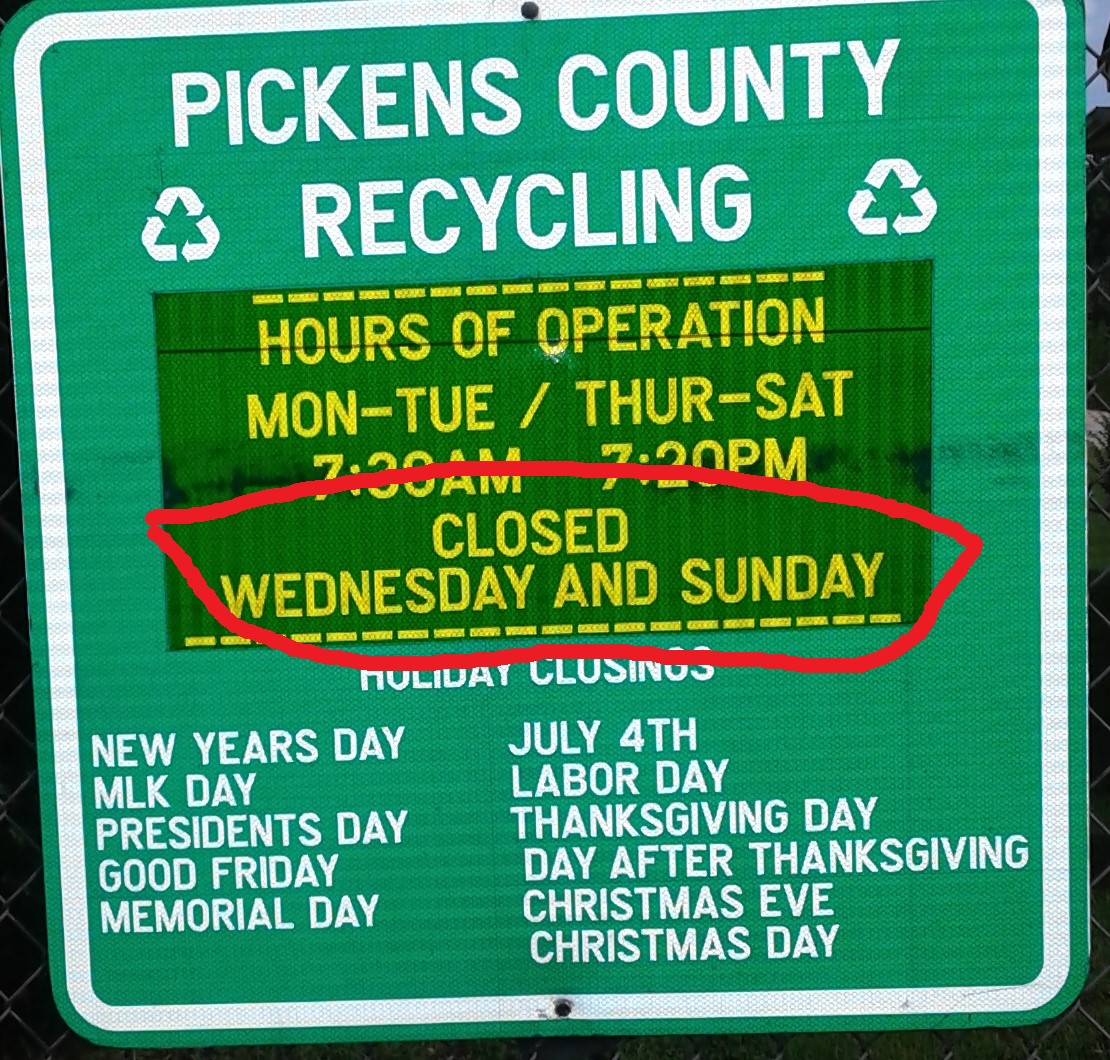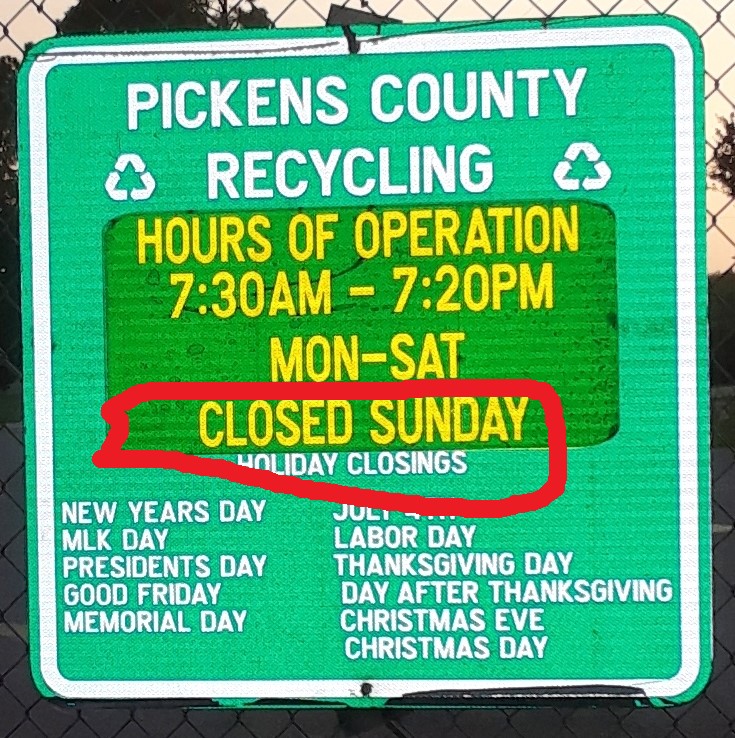High Speed Internet Service
By Alex Saitta
September 16, 2020
First, Recycle Center Update:
In mid-2018 the county council voted to close the recycle centers on Wednesdays and added a bunch of days to the holiday calendar (see below). The county was continuing to grow in population, trash disposal and revenue, so there were widespread complaints with the cut back of this essential service.
This was one of the primary issues I ran on, adding my voice to those who wanted to see the centers open again on the Monday to Saturday, 7:30 am to 7:20 pm schedule.
Credit to the county council and the administration, they heard the voices. First they reopened the Easley center (Old Liberty Road) on Wednesday. They then reopened all the centers on Wednesdays, but cut the hours from 8 am to 6 pm. Finally, they restored the full schedule last week -- Monday through Saturday, from 7:30 am to 7:20 pm.
High Speed Internet Service (HSIS)
Another issue that came to the forefront during this past election was high speed internet service (HSIS), or the lack of in rural areas. When Covid-19 hit and the onset of e-learning, telemedicine and more employees working from home, the lack of HSIS in the rural areas came to light.
Let’s start with the positives. Everyone now recognizes HSIS is an essential utility. Additionally, those lacking this service like in rural Dacusville, Six Mile and Pickens, you now have plenty of advocates on your side including school districts, big business, county council, the state legislature, and even the US Congress. For example, the last time I checked in Pickens County there were 70 teachers and staff, and students in 1,830 homes who lack high speed internet
On the other side of the coin, pushing out HSIS to all is a daunting challenge that at best will take years to implement.
AT&T:
Broadly speaking internet service can be delivered via a cell tower, satellite or a wire network. A copper or fiber network is the most reliable and preferred. AT&T has the biggest wire network nationwide and provides internet service via DSL and UVerse to many. However, AT&T doesn’t have an interest in expanding its network to the rural-est of areas mainly because their existing network is quite old, labor intensive to maintain and putting in the extra equipment to reach rural users would not be economically feasible to the company. AT&T is a worldwide company that sees their opportunities elsewhere. Short of the US Congress mandating it, I do not think AT&T is the solution.
The state legislature has come up with some baby-steps to help inch the process along. One includes spending $300,000 to map where HSIS is lacking. Second, is a short-term patch to spend $20 million to purchase hot spots for students who lack internet capability. Another proposal is to spend $50 million on HSIS infra-structure.
Local Utilities:
Local utility companies have expressed an interest in providing HSIS. A year or so ago, many received a survey from the Blue Ridge Coop trying to gauge interest. Blue Ridge has an electricity network it could leverage to provide HSIS to rural areas. However, I estimate the cost would be about $100 million to put in the equipment, run the wires, etc. And I don’t think anyone will see it as fair for the electricity customers pay to subsidize it. Additionally, unlike AT&T, Blue Ridge is not a common carrier so in many instances they’ll have to pay franchise fees and right-of-ways.
The long-term solution will probably have two elements: One, the US Congress and/ or state legislature will setup the regulatory environment, change some laws and incentivize the private sector to make the necessary infra-structure investments and/ or they’ll partially subsidize these companies when it comes to the required infra-structure investment.




